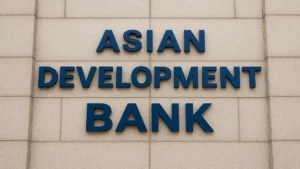Invest India predicts that India’s ecommerce sector will skyrocket to $325 billion by 2030, with rural India driving much of the growth. This surge is fueled by factors such as increased internet penetration, affordable internet services, and a rising number of smartphone users.
Projected Growth and Driving Factors
Invest India forecasts India’s ecommerce market to reach $325 billion by 2030, with the nation’s digital economy expected to hit $800 billion. Currently valued at $70 billion, online shopping accounts for 7% of India’s total retail market, signaling immense potential for expansion. Factors such as high internet penetration, affordable internet services, and a surge in rural smartphone users are poised to propel the sector forward.
Rural India: Leading the Charge
Rural India is anticipated to be the primary driver of ecommerce growth, with tier 2-4 towns and rural areas expected to generate a significant portion of demand by 2026. Government initiatives and the rise of quick commerce further bolster this trend. The Government e-marketplace (GeM) achieved a record Gross Merchandise Value of $2011 billion in fiscal year 2022-23, indicative of the increasing role of rural consumers in ecommerce.
Mobile Revolution and Digital Transactions
The proliferation of smartphones, coupled with the dominance of the Unified Payments Interface (UPI) in digital transactions, is instrumental in shaping India’s ecommerce landscape. By 2026, over 80% of India’s population is projected to have access to smartphones, driving higher average data consumption and fostering the digital economy. The UPI facilitated transactions worth $1.5 trillion in 2022, highlighting its significance in enabling digital transactions.
Hyperlocal Mobility Sector: Key Players and Growth
The quick commerce market within India’s hyperlocal mobility sector is expected to experience exponential growth, reaching a market size of $5.5 billion by 2025. Industry leaders like Swiggy and Zomato are at the forefront of this market, with startups like Zepto also gaining substantial market share. Mergers and acquisitions are prevalent in the ecommerce sector, with companies strategically positioning themselves for growth.
Government Initiatives Shaping the Digital Economy
Government schemes such as Jan Dhan Yojana, BharatNet Project, and the implementation of Goods & Service Tax (GST) play crucial roles in shaping India’s digital economy. These initiatives aim to enhance logistical efficiency, improve internet connectivity, and streamline digital transactions, fostering a conducive environment for ecommerce growth.




 Retail Inflation Rises Slightly to 0.71%...
Retail Inflation Rises Slightly to 0.71%...
 India’s Foreign Reserves Touch $687.26 B...
India’s Foreign Reserves Touch $687.26 B...
 ADB Raises India’s Growth Forecast to 7....
ADB Raises India’s Growth Forecast to 7....







